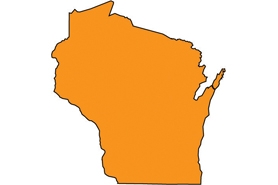Amur maple
(Acer tataricum subsp. ginnala)
Multi-stemmed deciduous tree or shrub in the maple family.
Other names for this plant include:
- Common names: Siberian maple, ginnala maple
- Scientific names: Acer tataricum, Acer ginnala
Classification in Wisconsin: Restricted (all cultivars exempt)
- Ecological Threat
-
- Invades open grasslands, open forests, prairies, forests and field edges.
- Outcompetes native shrubs and understory trees, reducing overall biodiversity.
- Can shade out native species in prairie ecosystems, converting prairie communities to shaded shrubland or woodland.
- United States Forest Service designates this species as invasive in several eastern states with similar climate zones.
- Trees produce abundant, wind-dispersed seeds that germinate readily.
- Trees are tolerant of a wide range of environmental conditions, and more drought and shade tolerant than native maples.
- May contain allelopathic chemicals, inhibiting the root development of desired species.
- Identification
-
Leaves & stems: Leaves and stems are opposite, with two leaves per stem node. Leaves are simple with three shallow lobes; bright green turning scarlet red in fall. The bark is grayish-brown and smooth when young, developing furrowed striations with age.
Flowers: Panicle flowers are fragrant and pale yellow-whitish.
Fruits & seeds: Red samara (helicopter) seeds (borne in pairs) have tight-angled almost parallel wings. Samaras travel long distances in the wind and readily germinate.
Similar species: Amur maple can be distinguished from other maples by its narrow leaf shape with three shallow lobes.
- Control
- Mechanical:
- Amur maple saplings are easily pulled by hand.
- Larger trees can be cut, but do resprout.
- Prescribed fire in prairies can be an effective means of control.
- General herbicide treatments are effective.
- Cut-stump treatment glyphosate and basal bark treatment or frilling with triclopyr are successful.
- Resources
- Sources for content:
- Invasive Plant Atlas of New England
- Center for Invasive Species and Ecosystem Health; invasive.org
- Minnesota Department of Natural Resources
- USDA Forest Service


